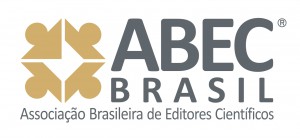Percepções maternas sobre o uso da bolsa canguru em bebês a termo saudáveis em maternidade e domicílio: uma investigação apreciativa
DOI:
https://doi.org/10.5216/ree.v24.71351Palabras clave:
Método Canguru, Aleitamento Materno, Recém-Nascido, Alojamento ConjuntoResumen
Objetivo: conhecer as percepções maternas sobre a experiência do uso da bolsa canguru em bebês a termo saudáveis, desde o nascimento até o quinto mês de vida. Métodos: estudo qualitativo, baseado no referencial metodológico da Investigação Apreciativa, realizado com 23 mães de bebês a termo, saudáveis e que utilizaram a bolsa canguru na maternidade e no domicílio, em Goiânia, Goiás, Brasil. Foram realizadas entrevistas no domicílio das puérperas. Para análise utilizou-se a Análise de Conteúdo, modalidade temática. Resultados: as mães destacaram que usar a bolsa canguru favorece a amamentação, melhora autonomia da mãe, o conforto e padrão de sono do bebê, e fortalece vínculos familiares. Afirmaram ainda, ser necessário difusão de conhecimento e aprimoramento na habilidade do uso da bolsa canguru. Conclusão: o uso da bolsa canguru foi percebido como vantajoso pelas mães que fizeram uso mais frequente da estratégia, mas enfrenta desafios para sua adoção, incluindo o medo de acidentes e percepção de calor ou desconforto pelas mães, que desencorajam seu uso.
Descargas
Citas
Slonecker EM. Altricial. In: Vonk J, Shackelford T, editors. Encyclopedia of Animal Cognition and Behavior. Cham: Springer International Publishing; 2017. doi: 10.1007/978-3-319-47829-6_1962-1
Widström A, Brimdyr K, Svensson K, Cadwell K, Nissen E. Skin‐to‐skin contact the first hour after birth, underlying implications and clinical practice. Acta Paediatr. 2019;108(7):1192-204. doi: 10.1111/apa.14754
Chaturvedi P. ‘Breast Crawl’ to initiate breast feeding within half an hour after birth. Journal of Mahatma Gandhi Institute of Medical Sciences. 2008;13:32. doi: 10.1186/s13006-018-0174-9
Bergman NJ. Birth practices: Maternal‐neonate separation as a source of toxic stress. Birth Defects Research. 2019;111(15):1087-109. doi: 10.1002/bdr2.1530
Charpak N, Ruiz JG, Zupan J, Cattaneo A, Figueroa Z, Tessier R, et al. Kangaroo Mother Care: 25 years after: Kangaroo Mother Care: 25 years after. Acta Paediatr. 2007;94(5):514-22. doi: 10.1111/j.1651-2227.2005.tb01930.x
Ministério da Saúde, Secretaria de Atenção à Saúde, Departamento de Ações Programáticas Estratégicas. Atenção humanizada ao recém-nascido: Método Canguru. Manual técnico. 3ª ed. Brasília: Ministério da Saúde; 2017 [cited 2022 Dec 28]. Available from: http://bvsms.saude.gov.br/bvs/publicacoes/atencao_humanizada_metodo_canguru_manual_3ed.pdf
Mekonnen AG, Yehualashet SS, Bayleyegn AD. The effects of kangaroo mother care on the time to breastfeeding initiation among preterm and LBW infants: a meta-analysis of published studies. Int Breastfeed J. 2019;14:12. doi: 10.1186/s13006-019-0206-0
Moore ER, Bergman N, Anderson GC, Medley N. Early skin‐to‐skin contact for mothers and their healthy newborn infants. Cochrane Database of Systematic Reviews 2016, Issue 11. Art. No.: CD003519. DOI: 10.1002/14651858.CD003519.pub4.
Charpak N, Angel MI, Banker D, Bergh A, Bertolotto AM, De Leon‐Mendoza S, et al. Strategies discussed at the XIIth international conference on Kangaroo mother care for implementation on a countrywide scale. Acta Paediatr. 2020;109(11):2278-86. doi: 10.1111/apa.15214
Cooperrider DL, Whitney D. Investigação apreciativa: uma abordagem positiva para a gestão de mudanças. Rio de Janeiro: Qualitymark; 2005
Souza LV e, McNamee S, Santos MA. Avaliação como construção social: investigação apreciativa. Psicol Soc. 2010;22(3):598-607. doi: 10.1590/S0102-71822010000300020
Schön RA, Silvén M. Natural Parenting - Back to Basics in Infant Care. Evol Psychol. 2007 [cited 2022 Oct. 15]; 5(1):147470490700500. doi: 10.1177/147470490700500110
Bardin L. Análise de conteúdo. 7ª ed. Lisboa: Edições 70; 2011
Esposito G, Coppola KB, Truzzi A. How Can I Make My Younger Sibling Stop Crying? Front. Young Minds. 4:28. doi: 10.3389/frym.2016.00028
Christensson K, Cabrera T, Christensson E, Uvnäs–Moberg K, Winberg J. Separation distress call in the human neonate in the absence of maternal body contact. Acta Paediatr. 1995;84(5):468-73. doi: 10.1111/j.1651-2227.1995.tb13676.x
Bastani F, Rajai N, Farsi Z, Als H. The Effects of Kangaroo Care on the Sleep and Wake States of Preterm Infants. J Nurs Res. 2017;25(3):231-9. doi: 10.1097/JNR.0000000000000194
Akbarian Rad Z, HaghShenas Mojaveri M, Zahed Pasha Y, Ahmadpour-Kacho M, Kamkar A, Khafri S, et al. The Effect of Kangaroo Mother Care on Fuss and Crying Time in Colicky Infants. Iranian Journal of Neonatology IJN. 2015;6(1):23-7. doi: 10.22038/ijn.2015.4152
Norholt H. Revisiting the roots of attachment: A review of the biological and psychological effects of maternal skin-to-skin contact and carrying of full-term infants. Infant Behav Dev. 2020;60:101441. doi: 10.1016/j.infbeh.2020.101441
Araújo KEAS, Santos CC, Caminha MFC, Silva SL, Pereira JDCN, Batista Filho M. Skin to skin contact and the early initiation of breastfeeding: a cross-sectional study. Texto Contexto Enferm. 2021;30:e20200621. doi: 10.1590/1980-265X-TCE-2020-0621h
Günay U, Şimşek DC. Emotions and Experience of Fathers applying Kangaroo Care in the Eastern Anatolia Region of Turkey: A Qualitative Study. Clin Nurs Res. 2021;30(6):840-6. doi: 10.1177/1054773820937479
Dongre S, Desai S, Nanavati R. Kangaroo father care to reduce paternal stress levels: A prospective observational before-after study. J Neonatal Perinatal Med. 2020;13(3):403-11. doi: 10.3233/NPM-180190
Ionio C, Ciuffo G, Landoni M. Parent–Infant Skin-to-Skin Contact and Stress Regulation: A Systematic Review of the Literature. Int J Environ Res Public Health. 2021;18(9):4695. doi: 10.3390/ijerph18094695
Pisacane A, Continisio P, Filosa C, Tagliamonte V, Continisio GI. Use of baby carriers to increase breastfeeding duration among term infants: the effects of an educational intervention in Italy. Acta Paediatr. 2012;101(10):e434-8. doi: 10.1111/j.1651-2227.2012.02758.x
Frisbee SJ, Hennes H. Adult-worn child carriers: a potential risk for injury. Inj Prev. 2000;6(1):56-8. doi: 10.1136/ip.6.1.56
Silva CS, Souza KV, Alves VH, Cabrita BAC, Silva LR. Atuação do enfermeiro na consulta pré-natal: limites e potencialidades. R Pesq Cuid Fundam. 2016;8(2):4087-98. doi: 10.9789/2175-5361.2016.v8i2.4087-4098
Descargas
Publicado
Número
Sección
Licencia
Derechos de autor 2022 Revista Eletrônica de Enfermagem

Esta obra está bajo una licencia internacional Creative Commons Atribución 4.0.














